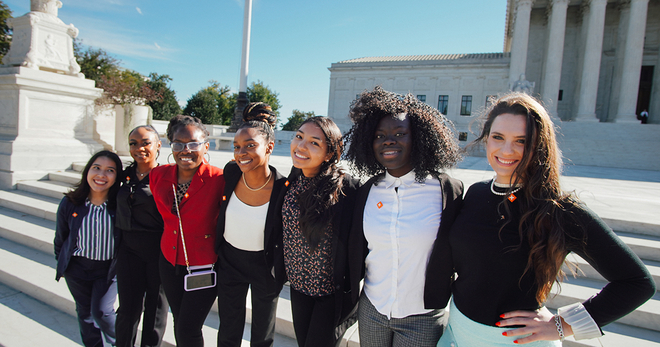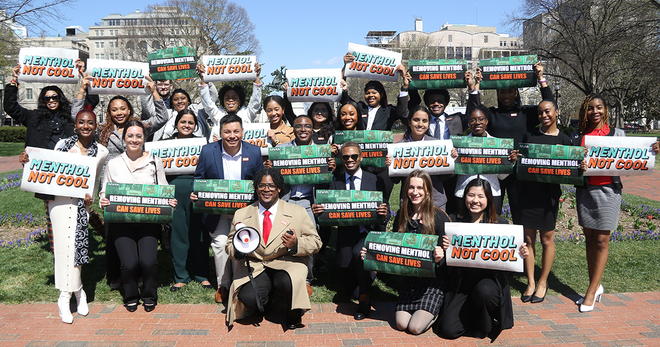Q&A: How to train emerging activists to support a social movement
Enlisting youth and young adults is an important part of igniting and sustaining social movements. But how can you help emerging activists be effective?
At Truth Initiative®, we’ve trained hundreds of young people to be community activists through our National Summit on Youth Activism, an annual training program for youth and young adults. At this year’s summit, 148 high school students spent four days just outside Washington, D.C. learning ways to educate, engage and empower people in their communities to end tobacco use. Participants traveled home with a plan for creating local tobacco-control projects.

The summit shows us a lot about how to teach skills, facilitate collaboration and inspire action among young people—key components to any social campaign, regardless of the subject. To better understand how to help youth become effective activists, we spoke with Vincent Irving, community outreach manager of the Community and Youth Engagement program at Truth Initiative and former summit manager.
Q: What qualities make for good activists?
A: You should look for youth that do not mind being youth—energetic, adventurous and even sometimes secretly unsure of their next move.
Look for creative young people. You want youth who have the wildest ideas and can somehow bring them to life, while at the same time helping with an issue. Youth who think outside the box and don’t hold back their true thoughts. Those who have the desire to always learn and get more information about whatever it is they’re passionate about.
Q: What should emerging activists learn to be effective activists?
A: Everyone should work on their public speaking skills, because as an activist you always have to speak to someone—whether in person, online or on video. Some other good things to learn are problem solving skills, event planning and time management. At the summit, we focus on teaching three things: effective activism strategies, approaches to community engagement and traditional and new media outreach.
Sessions on effective activism strategies cover how to recruit people into your campaign, connect them to the issue that you’re focused on and showcase the importance of them being part of that issue. When we teach community engagement, we focus on how to take something a community has positively resonated around—tactics, activities or approaches that have been used before and have worked—and teach people how to utilize that same tactic, activity or approach. With traditional and new media outreach trainings, we highlight how to effectively get a message out on and create useful content for different social media platforms.
Q: Why focus on these skills?
A: We found that these are the skills that youth want to learn, and they can be used in a variety of different ways. It doesn’t matter if someone wants to do a social media campaign or someone else wants do to a petition drive, these skills can be used no matter what action or tactic you decide to take.
Q: Now we know what to teach emerging activists, but how should you teach them?
A: Always keep creativity in mind, and always have some type of hands-on, skill-building component to every single training session. Try to avoid a 100 percent lecture-based session, keep all sessions at an hour or less and do something fun and engaging in the beginning, like an ice breaker.
Also, have the sessions build off each other. At the summit, for example, by the end of the first session there was something participants created that they would take into the second session. In the second session, they needed to take that into the third, and so on. At the end of the trainings, your would-be activists come together as a group and put what they create into a plan of action that they then take home with them.

Q: How can you ensure a smooth training process?
A: Start early in the planning process, and find out what the young people you’re working with enjoy doing—whether that’s social media, educating people, creating flyers—to ensure they’ll have fun and stay engaged long-term.
Give youth the authority to make decisions. Listen to their ideas and help facilitate and guide them to create the approach they think is best. If they want to change something, allow them to change it. And never, ever, try to stop their creativity—encourage and support it, fight on behalf of it.
Q: How is an event like the summit a great setting to teach young activists?
A: You don’t want activists to feel like they’re in school, because they’re not. Instead, make it an opportunity for them to see that making change in communities doesn’t have to be boring. It can be fun, it can be engaging and you can give people information in ways that they don’t traditionally receive information—like through a game of hacky sack, a photo booth or a DJ playing music during a dance-off.

Q: Once you finish training youth, what guidance and support should you offer as they start their activism work?
A: As soon as you teach them these skills and give them knowledge, it’s important to give them the opportunity to take action immediately. If not, they’re going to forget about it and lose interest.
After the summit, we sent participants a toolbox of resources that includes a smartphone camera rig and a mic. This helps them capture the work they do on the ground and tell their own story. They can use these resources to help elevate whatever they plan, and they can continue to reach out to us for more.
Q: Do you have any last advice for training youth to be activists?
A: Always have fun. It’s a lot of work and there are going to be some stressful days, especially when you’re engaging youth through the process—but it has such a large payoff in the end.
Want to see examples of youth activists in action? Visit truthinitiative.org/get-involved.
More in tobacco prevention efforts
Want support quitting? Join EX Program
By clicking JOIN, you agree to the Terms, Text Message Terms and Privacy Policy.
Msg&Data rates may apply; msgs are automated.



